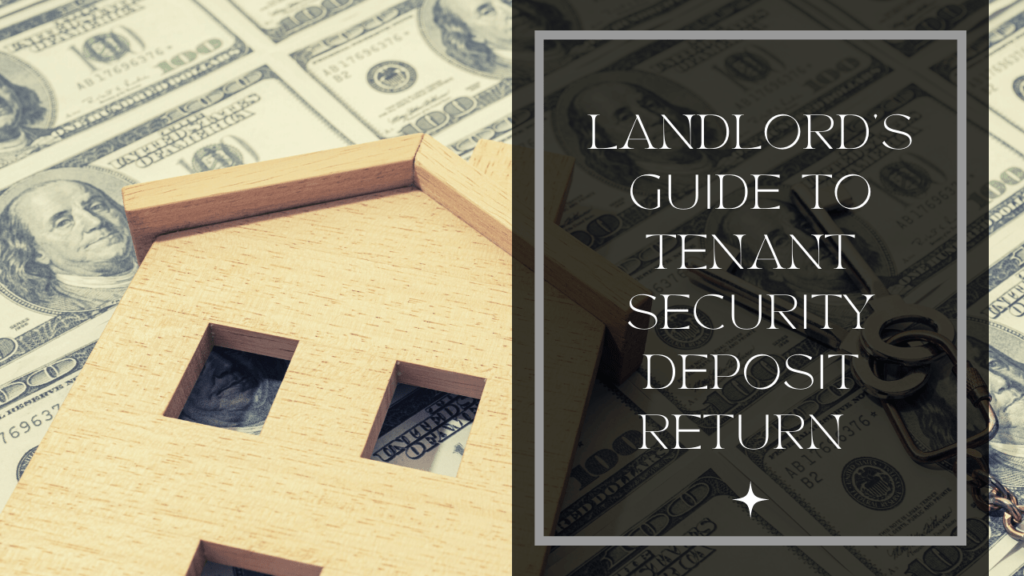
California’s rental laws are strict, and while a lot of the focus in recent years has been on rent control and moratoriums and just cause evictions, it’s important that you remember your responsibilities when it comes to the security deposit. If there’s going to be a dispute between a landlord and a tenant, chances are good that the conflict will be due to the deposit.
Security deposit law in Santa Rosa and throughout Sonoma County and California is detailed. There are limits to how much you can collect, for example, and you have to keep the security deposit funds separate from your own money.
You need to know when to return a security deposit and what you’re able to keep out of that deposit. Here is a brief guide on how to return the security deposit to your tenants at the end of their lease term.
Santa Rosa Rental Property Move-Out Inspections
When you own rental property in California, you’re legally required to offer your tenants a pre-move-out inspection. Your lease agreement likely requires a 30 or 60-day notice period. Once you receive that notice from them, begin making plans for their departure. Send them a list of what they need to do in order to receive a full security deposit refund. This might include having the carpets professionally cleaned and providing a forwarding address or returning keys.
Before their lease term comes to an end and they vacate the property, you and your tenant will have the opportunity to walk through the property together to discuss what needs to be done to return the home to the condition it was in when the tenants took occupancy.
Not all tenants accept this invitation, and not a lot of landlords like to do it. But, it’s actually a good opportunity to see what kind of damage and wear and tear you’re up against. Tenants who want to know where they stand with their deposit will welcome the walk-through.
Returning Your Santa Rosa Tenant’s Security Deposit
After your tenants have officially vacated, you will have the opportunity to inspect the empty property and document its condition. Use your move-in inspection report to create a move-out inspection report. This allows you to compare the condition of the home at this point to the condition it was in when the tenants took possession.
Make sure you understand the limits of what you can deduct from the security deposit. This is where tenants will take you to court if they believe you are deducting for something that is not their fault or outside of their control. You can deduct for damage, but you cannot deduct for general wear and tear. Those small nail holes in the walls and scuff marks from where the sofa rested cannot be charged to the tenant.
Take pictures to document the property’s condition. If you notice damages that are beyond normal wear and tear, you can charge for that. Make sure you can demonstrate that those things were not broken or damaged at the beginning of the lease.
Security Deposit Timelines
 California law requires you to return the security deposit to the tenants within 21 days of the tenant moving out. If the tenant isn’t receiving a full deposit refund, you should send the amount that they are getting back with an itemized list of what you’ve deducted and why. Be specific and include receipts, invoices, and other documentation to support what you’ve charged.
California law requires you to return the security deposit to the tenants within 21 days of the tenant moving out. If the tenant isn’t receiving a full deposit refund, you should send the amount that they are getting back with an itemized list of what you’ve deducted and why. Be specific and include receipts, invoices, and other documentation to support what you’ve charged.
If your tenant disputes what you’ve withheld or you don’t return the deposit in time, you could face penalties of three times the amount of the original security deposit. It’s important that you know what’s expected of you, and that you follow the law.
Don’t be nervous about security deposit complaints. We can help. Contact us at Prestige Real Estate & Property Management. We’re your property management experts in Sonoma County, including Santa Rosa, Windsor, Sebastopol, Petaluma, and Rohnert Park.